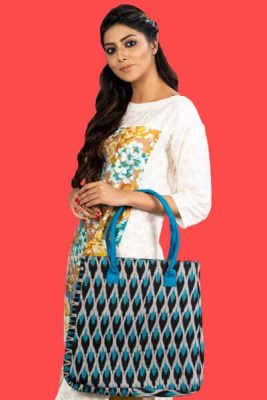Fashion
Avoiding Fast Fashion: How to Get a More Sustainable Wardrobe
Buying stylish clothes at an affordable price is appealing to most consumers, but it can have negative impacts on our environment. Known as fast fashion, this industry offers low prices on clothing, but it comes at a hidden cost. Thanks to a rise in the human population and the increasing popularity of fashion-related social media content, people often think they need more clothes than they really do. In fact, humans are consuming a whopping 400% more clothing today than they were 20 years ago. Behind the automotive and technology industries, clothing is the third biggest manufacturing industry in the world. However, fashion manufacturers are responsible for five percent of the world’s greenhouse gas emissions, producing 1.2 billion tons of CO2 per year. If you want to learn how to avoid fast fashion by buying more sustainable clothing, read on to learn more.

What is Fast Fashion?
The term fast fashion refers to a highly profitable industry that mass produces clothing, shoes, and accessories based on the latest trends. This clothing is available at a low cost, but most products aren’t exactly made of the highest quality. Since trends come and go, most people who buy fast fashion items wear them short-term, then dispose of them. In many ways, it has dangerous repercussions on the environment.
The effects of Fast Fashion on the environment: Because this clothing is made at large manufacturing plants, it uses a massive amount of energy and natural resources. Some chemicals used in dyes and manufacturing can contaminate the soil and nearby waterways. As a whole, the industry produces a tenth of the world’s total carbon emissions. Producing items like jeans requires several thousand gallons of water, making it a wasteful industry as well. And, since this clothing is “disposable,” most fast fashion items end up in a landfill which contributes to pollution. On average, each American throws away approximately 80 pounds of clothing every year. Thankfully, there are some things you can do to reduce your consumption and carbon footprint.
What is Ethical and Sustainable Fashion?

Ethical and sustainable fashion uses materials that are made and marketed in a responsible way that takes its environmental and socioeconomic impacts into account. Ideally, the process of sustainable fashion is performed across a garment’s entire life cycle from the manufacturing process all the way to its disposal. In addition to having a smaller carbon footprint, this type of fashion pays attention to the ethical aspects too. People who work for these companies are paid a living wage and work in safe environments. Here are some examples of sustainable and ethical fashion.
Slow Fashion: Think of slow fashion as the exact opposite of fast fashion. Brands have an understanding and approach to fashion that takes the manufacturing process and resources it requires into consideration when making clothing. This industry holds a high value on the fair treatment of people, animals, and the environment. Many brands also focus on making fewer pieces and higher-quality items, so they last longer and don’t end up in a landfill.
Circular Fashion: In the circular fashion industry, materials and production are well thought out, and the company looks deeper at how each item can be used in a more sustainable way from manufacturing to disposal. It also takes things a step further by designing out waste and pollution by using recyclable or biodegradable materials. Some companies also make repurposed items out of old products, ensuring that these items remain in the life cycle of clothing rather than going to a landfill.
How can you make a change?

There are some things you can do, including:
- Find out where your clothes come from: Determine the source of your clothing including where it’s made, what type of materials are used, and if possible, the company’s manufacturing process. Knowing the source of your clothing is the first step toward making better purchasing choices.
- Analyze the brands you buy: Take a closer look at your wardrobe and your favorite brands. Find out where their clothes are made. Are they exploiting workers? Are they using wasteful or recyclable materials? How much does their clothing contaminate the environment? When you learn more about the clothes you love, you can make smarter choices for the future by choosing eco-friendly brands.
- Make smart choices: Reduce your consumption of clothing by wearing what you already have as much as possible before buying something, upcycling if possible so it doesn’t end up in a landfill. Repair ripped or torn clothing by sewing it back together before you throw it out. Resell clothing you no longer want or need so that someone else can enjoy wearing it. Donate clothing to local charities and to people in need.
Originally posted on Porch.com



